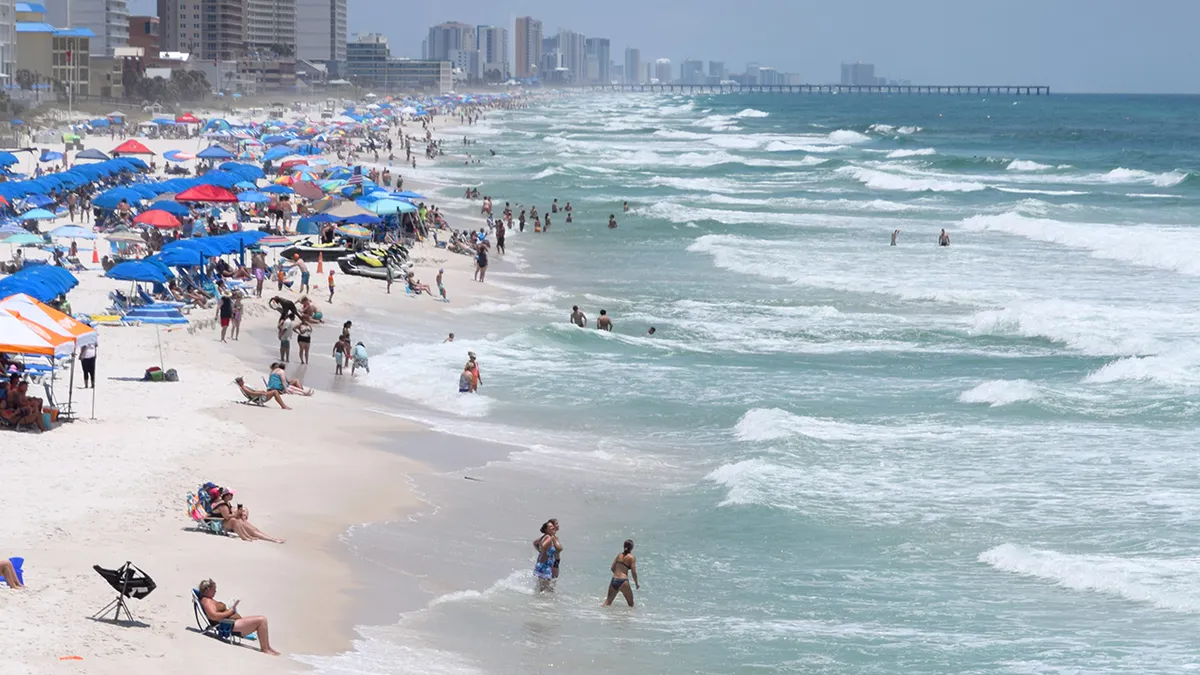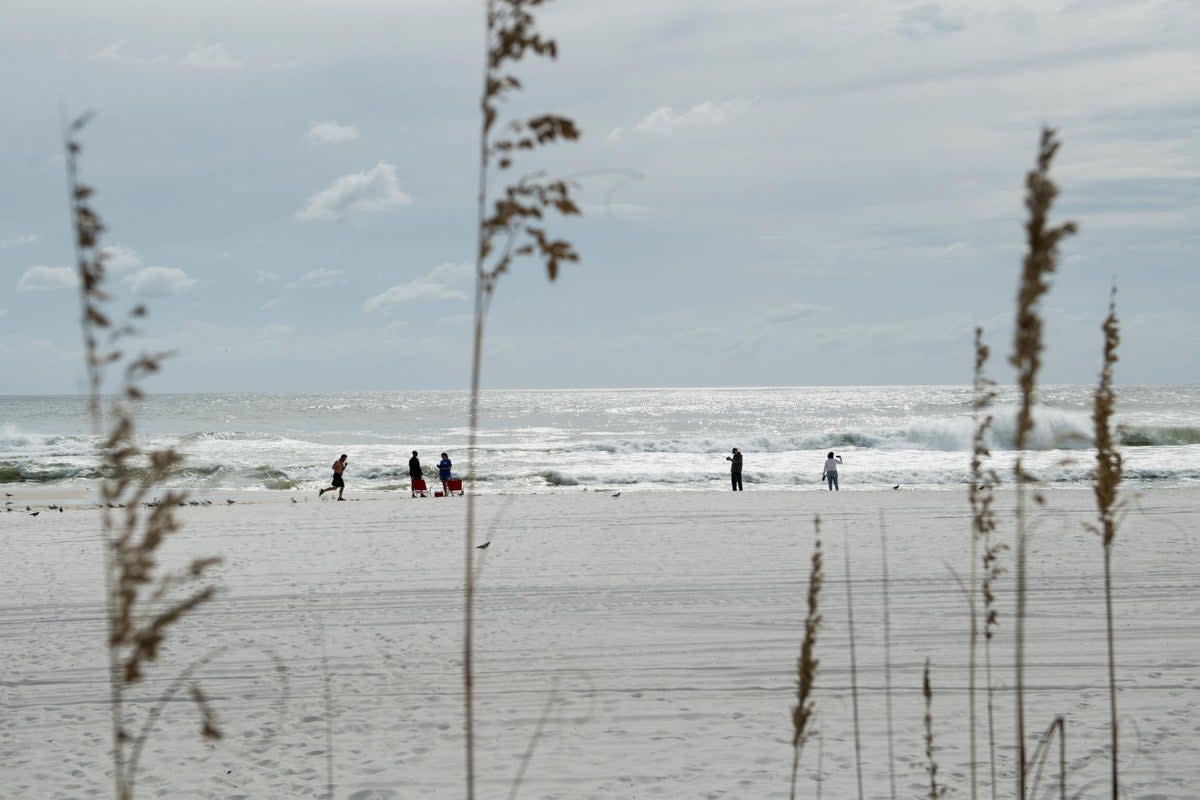Panama City Beach Rip Current Characteristics
Panama city beach rip current – Rip currents are powerful, narrow channels of fast-moving water that flow away from the shore, often through breaks in the sandbar. They can occur at any beach, but are particularly common on Panama City Beach due to the unique combination of a gently sloping beach, strong waves, and a tidal inlet.
The unforgiving waters of Panama City Beach have claimed countless lives to the merciless rip currents that lurk beneath its azure surface. Among those lost to the sea are individuals whose names and stories now echo in the annals of missing people , a haunting reminder of the beach’s treacherous nature.
Yet, despite the ever-present danger, the allure of Panama City Beach’s pristine sands and inviting waters continues to draw visitors from far and wide.
Formation and Mechanics of Rip Currents
Rip currents are formed when waves break near the shore and the water rushes back into the ocean. Some of this water is pushed back towards the beach, while some of it is pulled back out to sea. The water that is pulled back out to sea creates a narrow channel of fast-moving water, which is known as a rip current.
The deceptively calm waters of Panama City Beach can conceal treacherous rip currents that have claimed lives. Despite the dangers, lifeguards like Landon Knack ( landon knack ) tirelessly patrol the beaches, rescuing swimmers caught in these powerful currents. Their bravery and dedication serve as a constant reminder of the importance of water safety, especially during the peak tourist season when the beach is bustling with visitors.
Appearance and Behavior of Rip Currents
Rip currents can be difficult to spot, as they often appear as calm, clear areas of water. However, there are a few signs that can help you identify a rip current:
- A break in the line of waves
- A choppy, turbulent area of water
- A channel of water that is moving faster than the surrounding water
Factors that Contribute to the Strength and Frequency of Rip Currents
The strength and frequency of rip currents can be affected by a number of factors, including:
- The size and strength of the waves
- The shape of the beach
- The presence of a tidal inlet
- The wind speed and direction
Rip Current Safety and Prevention

Rip currents pose a significant threat to swimmers, accounting for numerous drownings annually. These powerful, narrow channels of fast-moving water can pull even experienced swimmers away from the shore.
Identifying Rip Currents
- Areas with choppy, turbulent water
- Darker, deeper water
- Lines of foam or debris moving away from the shore
- A break in the incoming wave pattern
Avoiding Rip Currents
Swim in designated areas with lifeguards present.
- Swim parallel to the shore, not directly towards it.
- Avoid swimming alone.
- If you encounter a rip current, do not panic.
Escaping Rip Currents, Panama city beach rip current
- Stay calm and do not try to swim against the current.
- Swim parallel to the shore until you are out of the rip current.
- If you are unable to swim, signal for help and float or tread water.
Safety Plan for Swimmers
Before entering the water, identify escape routes and potential rip current areas.
- Inform someone on shore of your swimming plans.
- Wear a life jacket or flotation device.
- Be aware of the weather conditions and water temperature.
Rip Current Management and Mitigation

Rip current management and mitigation involve strategies to reduce the risk of rip currents and improve beach safety. These strategies include monitoring and response by lifeguards and other beach safety personnel, using technology and warning systems, and implementing physical measures such as beach nourishment, groin construction, and artificial reefs.
Lifeguards and other beach safety personnel play a crucial role in monitoring and responding to rip currents. They are trained to identify rip currents, rescue swimmers in distress, and provide first aid. Lifeguards use various techniques to spot rip currents, including observing the water’s surface for unusual patterns, such as choppy water or a break in the wave line. They also use binoculars and drones to enhance their surveillance.
Technology and Warning Systems
Technology and warning systems can also help alert swimmers to rip current hazards. These systems include:
- Rip current detection systems use sensors to detect rip currents and issue warnings to swimmers.
- Warning signs and flags are placed on beaches to inform swimmers of rip current hazards.
- Mobile phone apps provide real-time information about rip currents and beach conditions.
Physical Measures
Physical measures can also be used to mitigate rip current risks. These measures include:
- Beach nourishment involves adding sand to the beach to create a wider, gentler slope, which can help dissipate rip currents.
- Groin construction involves building structures perpendicular to the shoreline to trap sand and create a wider beach.
- Artificial reefs can be placed offshore to break up waves and reduce the strength of rip currents.
| Method | Advantages | Disadvantages |
|---|---|---|
| Beach nourishment | Creates a wider, gentler beach slope, dissipating rip currents | Can be expensive and require ongoing maintenance |
| Groin construction | Traps sand, creating a wider beach | Can disrupt natural sediment transport and create new hazards |
| Artificial reefs | Breaks up waves, reducing rip current strength | Can be expensive to construct and maintain |
Panama City Beach is a popular tourist destination, but it’s also known for its dangerous rip currents. These powerful currents can pull even strong swimmers out to sea. To help keep beachgoers safe, the city has implemented a flag warning system.
The panama city beach flag system uses colored flags to indicate the level of danger from rip currents. A green flag means the water is safe for swimming, a yellow flag means there is a moderate risk of rip currents, and a red flag means the water is closed to swimming due to dangerous rip currents.
The relentless rip currents of Panama City Beach have claimed countless lives, leaving behind a tragic trail of drownings. The treacherous waters, once a source of joy and respite, have become a constant reminder of the fragility of life.
Yet, amidst the sorrow, the allure of Panama City Beach remains, its pristine shores and vibrant atmosphere a testament to the enduring power of nature.
In the emerald waters of Panama City Beach, the unseen danger of rip currents lurks beneath the surface. These treacherous currents can pull even experienced swimmers out to sea. To ensure safety, beachgoers should be aware of the Panama City Beach flag system, which uses different colored flags to indicate the level of rip current risk.
By heeding the warnings of the flags, visitors can enjoy the beauty of Panama City Beach without falling victim to its hidden dangers.
